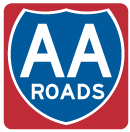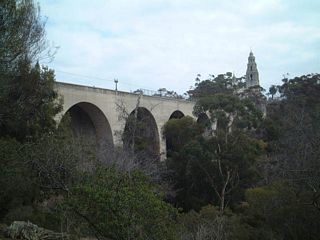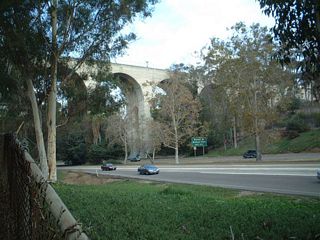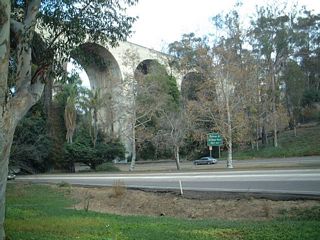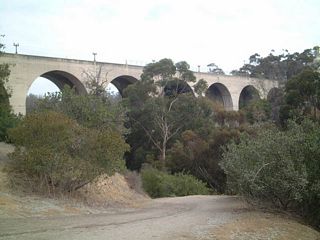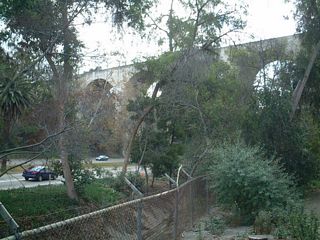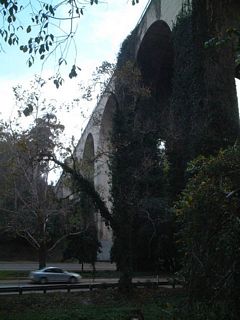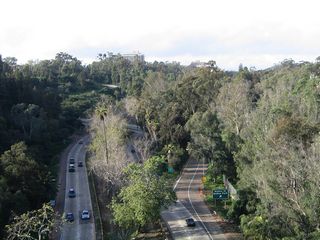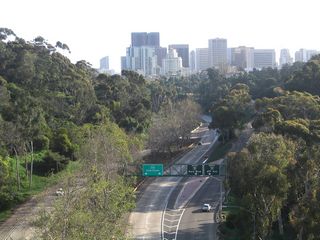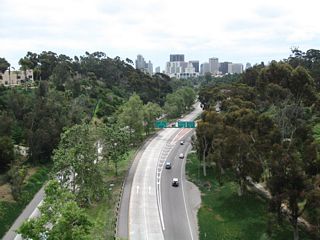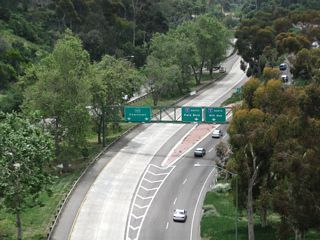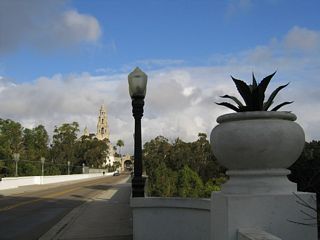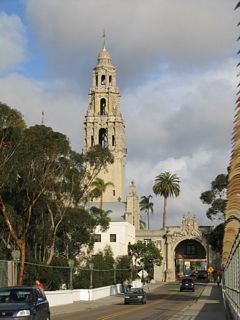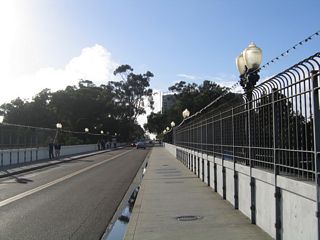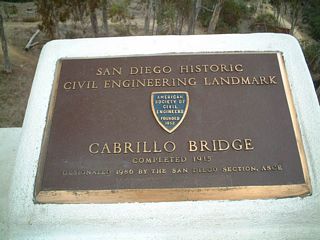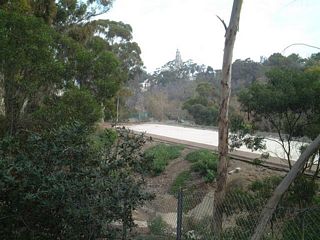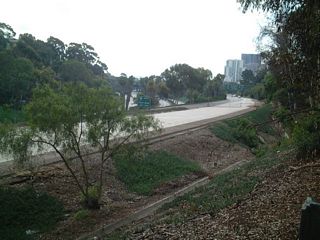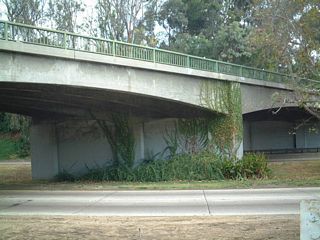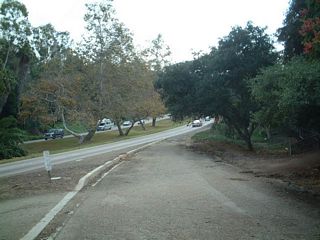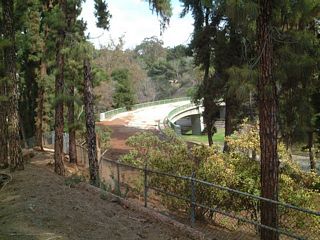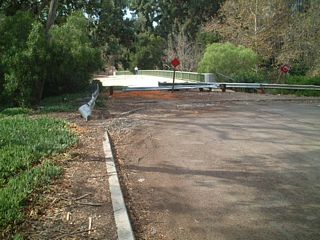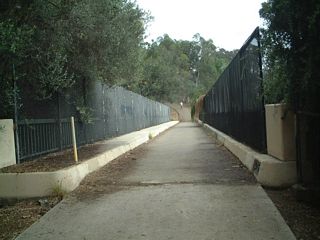State Route 163 - Cabrillo Freeway

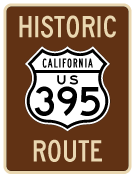
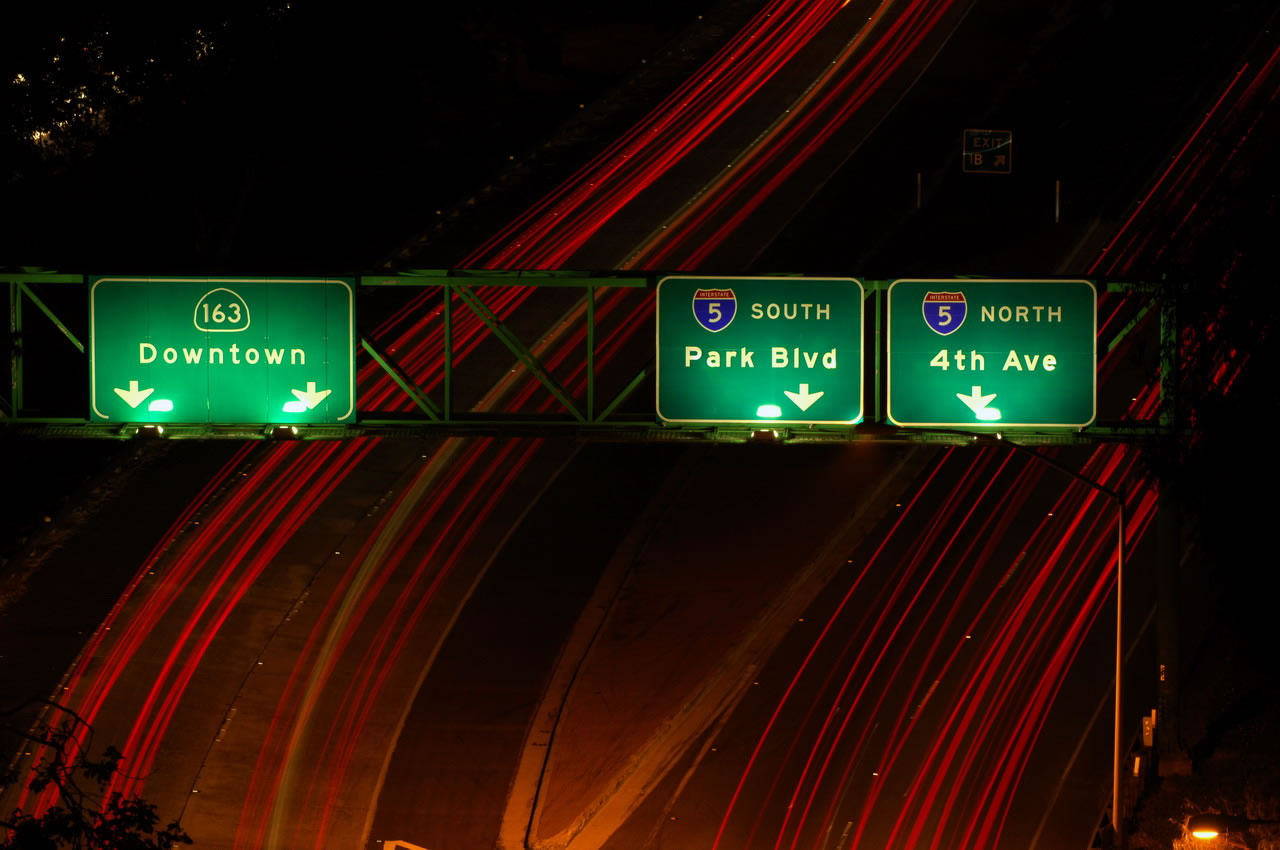
Southbound California 163 (Cabrillo Freeway) meets Interstate 5 at a four-level stack interchange. This view of the exit signage for Interstate 5 is from the Cabrillo Bridge on El Prado in Balboa Park in San Diego. - 05/19/2007
California 163 is the Cabrillo Freeway in San Diego, which follows the original freeway alignment of U.S. 395 between downtown San Diego and Miramar. The freeway changed designations once, when U.S. 395 was legislatively decommissioned in 1964. Ths signs weren't immediately removed, but by 1969, California 163 was signed on former U.S. 395. U.S. 395 shields remained alongside California 163 shields until at least 1972 or 1973 based on AAA maps from that time period. Today, California 163 is a major north-south connection in the San Diego freeway network. The section of freeway north of Interstate 8 is Interstate-standard, eight-lane freeway. The section of California 163 south of Interstate 8 through Balboa Park is a historic freeway that was one of the first freeways constructed in the city of San Diego. It is not Interstate standard, features a wide, grassy/tree-lined median, has only four lanes for the most part, and has several sharp curves (for a freeway). In an effort to improve safety along the section through the park, wooden guardrails with steel reinforcement were installed in December 2004 on either side of the grassy median.
California State Route 163 Guides
The freeway through the park is a designated California state scenic route and historic route. Great care was taken to ensure the minimum possible impact of the pavement on the surrounding greenery of Balboa Park. In a 1958 edition of California Highways and Public Works magazine, Jacob Dekema (a former director of Caltrans District XI) described the 2.5-mile stretch of freeway through the park:
- U.S. 395 [California 163 (Cabrillo Freeway)] acquires freeway character at A Street at the southern tip of 1,400-acre Balboa Park, which is imbedded in the geographical heart of the City of San Diego. The Cabrillo Freeway sweeps with gentle curves through a central valley of the park, providing the motorist with one of the most scenic drives in California. The initial freeway effort in District XI, it [California 163 through Balboa Park] still stands as a model of beauty and efficiency.1
Built between 1942 and 1947, the freeway opened in 1947 as U.S. 395. U.S. 395/Cabrillo Freeway was the first freeway to be constructed anywhere in San Diego County. The Cabrillo Freeway dates to an era when the oldest Los Angeles freeways were being built, including U.S. 66/Arroyo Seco Parkway, which is now known as California 110 (Pasadena Freeway). U.S. 395 was designed to connect the 10th Avenue and 11th Avenue couplet with Friars Road with a connection via 6th Avenue near Hillcrest into Mission Valley. The freeway was then extended north from Friars Road in phases thereafter to its current terminus at Interstate 15 in Marine Corps Air Station - Miramar.
A four-level interchange at the southern end of the freeway allows for movements in nearly all directions, except from northbound 11th Avenue to southbound Interstate 5 and from northbound Interstate 5 to southbound 10th Avenue. This interchange was initially decried by preservationists who feared such a large concrete structure would dominate the aesthetics in the park, but it seems to fit in well. Since its inception, the Cabrillo Freeway has retained only four lanes, and various efforts to expand the freeway have met with fierce resistance from local preservationists and community activists who appreciate the older design and lower capacity quality of the freeway. California 163 along the original Cabrillo Freeway alignment was established as an official state scenic route in 2003, and signs were posted to demonstrate its status as a historical route.
South of Interstate 5, there were likely plans to extend California 163 as a freeway along the 10th/11th Avenue couplet south to F Street and G Street, which in turn would connect California 163 directly to California 94, the Martin Luther King Jr. Freeway. Freeway plans contemplated this freeway connection until around 1984; maps from the 1970s and 1980s routinely showed California 163 signed on 10th Avenue and 11th Avenue. Maps still showed California 163 on 10th and 11th Avenue even after the freeway plan was scraped, but it is not clear if California 163 was ever signed on the surface streets. Two overhead signs on southbound California 163 just prior to the Interstate 5 interchange were modified in 1999 to eliminate a reference to California 94. With redevelopment now occurring throughout downtown San Diego and in the East Village, the freeway plan to connect California 163 to California 94 with a connecting freeway is dead and will not return.
Looking northeast at the Cabrillo Bridge (Laurel Street Bridge) from a path in Balboa Park along the western frontage of the SR 163. The Cabrillo Bridge carries Laurel Street/El Prado over SR 163 (Cabrillo Freeway).
10/26/02
The Cabrillo Bridge opened in 1915 well before the freeway was constructed; SR 163 (then known as U.S. 395) was built in the 1940s, and it was one of the first freeways to be constructed in San Diego.
10/26/02
The Cabrillo Freeway threads through the canyon below the Cabrillo Bridge, and a culvert carries the water that used to flow naturally through the canyon.
10/26/02
The Cabrillo Bridge could easily have more lanes of traffic pass under it, but concerns about an ever-expanding freeway into Balboa Park prevented any further widening in the canyon.
10/26/02
Viewing the Cabrillo Bridge to the southeast from a path in Balboa Park. The bridge was constructed between 1912 and 1914, withSan Diego Union-Tribuneindicating that then-Assistant Secretary of the Navy Franklin Roosevelt was the first to drive across the new bridge. He later became President of the United States. The bridge was in full use in 1915 as part of the Panama-California Exposition.
10/26/02
Looking east at the Cabrillo Bridge. The Cabrillo Bridge is a steel-reinforced cast-concrete bridge, and it rises 125 feet above the floor of the valley. The bridge itself is hollow, and wood pilings still remain from the original concrete poured in 1912-1914. Some of the interior wood burned in a fire in 2004, but the steel kept the bridge intact.
10/26/02
Downtown San Diego and Marston Point are visible from the Cabrillo Bridge beyond the Cabrillo Freeway. Overheads at the south end of SR 163 were replaced by 2006.
02/19/05
Ramps connecting SR 163 with I-5 north to San Diego International Airport (SAN) and south to Park Boulevard and Chula Vista separate below the Cabrillo Bridge.
04/21/11
Laurel Street/El Prado east crossing the Cabrillo Bridge in Balboa Park.
02/19/05
Located near the east end of the bridge this plaque commemorates the Cabrillo Bridge in Balboa Park.
10/26/02
California 163 is only four lanes wide through Balboa Park, though it was originally slated to be an eight to ten lane freeway. This expansion project never occurred due to community protest, but some remnants of the original plan are still visible, including this stub ramp located at the top of the transition ramp from southbound California 163 onto I-5.
10/26/02
If the expanded freeway were constructed, this ramp would have continued north, covering an existing foot path within Balboa Park park.
10/26/02
An entrance ramp previously connected Quince Street east with SR 163 south. Remnants of the abandoned ramp remain.
10/26/02
The Richmond Street bridge over the Cabrillo Freeway was originally part of a connection from Richmond Street south onto SR 163 south.
10/26/02
The Richmond Street bridge was constructed in 1946 at approximately the same time as the Cabrillo Freeway.
10/26/02
Built in 1946, this pedestrian bridge spans State Route 163 on the north side of Balboa Park .
10/26/02
References:
- "Report from District XI" by Jacob Dekema, District Engineer, California Highways and Public Works, November-December 1958, page 46.
Photo Credits:
- Andy Field: 10/26/02, 02/19/05, 04/21/11
Connect with:
Page Updated Tuesday May 03, 2011.
